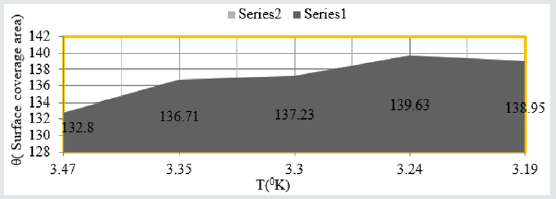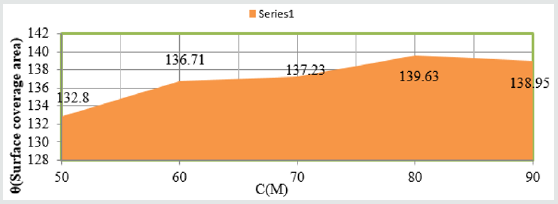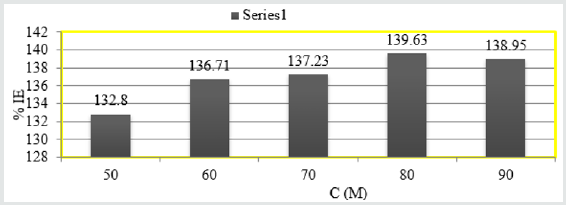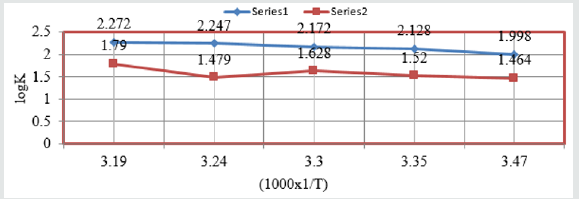Thursday, March 12, 2020
Lupine Publishers: Lupine Publishers | Acute Erythroblastic Leukemia ...
Lupine Publishers: Lupine Publishers | Acute Erythroblastic Leukemia ...: Lupine Publishers | Open Access Journal of Oncology and Medicine Abstract Acute erythroblastic leukemia is characteriz...
Wednesday, March 11, 2020
Lupine Publishers: Lupine Publishers | Principles of the Military Con...
Lupine Publishers: Lupine Publishers | Principles of the Military Con...: Lupine Publishers- Anthropological and Archaeological Sciences Journal Impact Factor Introduction A way from the regular th...
Friday, March 6, 2020
Corrosion of Snails in H2CO3 Medium and Their Protection by Aloe Vera| Lupine Publishers
Lupine Publishers| Material Science Journals
Abstract
Keywords: Corrosion; Snails; Aloe vera; Carbonic acid; Potentiostat; Thin film formation
Introduction
Experimental
Results and Discussion
The percentage inhibitors of Aloe Vera at different temperatures and concentrations as one-year interval were calculated by %IE= (1-K/Ko) X100 (where Ko corrosion rate without inhibitor and K corrosion rate with inhibitor) and the values were written in Table 3. The results of Table 3 were depicted that percentage inhibitors efficiency were increased as temperatures and concentration were enhanced. Such types of trends also observed in Figure 6 %IE Vs T and Figure 7 %IE Vs C. Surface adsorption phenomenon was studied by activation energy, heat of adsorption, free energy, enthalpy and entropy. Activation energy was determined by formula K=A e-Ea/RT (where K is corrosion rate, Ea is activation energy and T is absolute temperature without and with action of Aloe Vera at different temperatures and concentrations and their values were recorded in Table 4. It observed that activation energy increased without inhibitors but its values decreased after addition of inhibitors. These results were shown in Table 4 which indicated that inhibitors adhered on snails by chemical bonding and their values were obtained by Figure 8 plotted logK Vs 1/T. Heat of adsorption values were found to be negative which indicated that Aloe Vera was shown an exothermic reaction in H2CO3 medium. It adsorbed on the surface of snail by chemical bonding. The values of heat of adsorption were determined by Langmuir isotherm log(θ/1-θ) = logA +logC-q/2.303RT and Figure 9 plotted log(θ/1-θ) Vs1/T and Figure10 plotted against log(θ/1-θ) Vs logC and their values were recorded in Table 4.
Free energy of inhibitor Aloe Vera was calculated by equation ΔG=2.303 log(33.3K) and their values were given in Table 4. Their values noticed that inhibitor action a chemical reaction because free energy values were negative, and their values mentioned in Table 4. Enthalpy of used inhibitors was determined by transition state equation K=RT/Nh eΔS/R e-ΔH/RT and its values were recorded in Table 4. These values indicated that inhibitor’s Aloe Vera boned with snail by chemical bonding. Entropy of Aloe Vera was determined by equation by ΔG = ΔH – TΔS and their values were mentioned in Table 4. Their values were shown that deposition of Aloe Vera on the surface of snail was an exothermic process. It formed stable barrier on the surface of snail. All five values of thermal parameters plotted against T in Figure 11 and Figure 12 against C. The corrosion potential, corrosion current density and corrosion rate were determined by the equation ΔE/I=1/2.303 βaβc/(βa+βc) and C R(mpy)=0.1288 Ic (mA/cm2) XE/ρ and values were recorded in Table 5. It observed that without inhibitor corrosion potential and corrosion current were decreased but after addition of Aloe Vera corrosion current densities were increased. It also reduced the corrosion potential and corrosion current. The corrosion rate calculated by potentiostat technique and their values were tallied with the corrosion rate determined by gravimetric method. Corrosion potential versus corrosion current density was plotted in Figure 13. This plot indicated that anodic current reduced as addition of inhibitor but cathodic current enhanced Table 5.
Conclusion
Acknowledgment
For more Lupine Publishers Open Access Journals Please visit our
website:
https://lupinepublishers.us/For more Journal of Modern
Approaches on Material Science articles Please Click Here:
https://lupinepublishers.com/material-science-journal/To Know More About Open Access Publishers Click on Lupine
Publishers: https://lupinepublishers.com/
https://lupinepublishers.us/For more Journal of Modern Approaches on Material Science articles Please Click Here:
https://lupinepublishers.com/material-science-journal/To Know More About Open Access Publishers Click on Lupine Publishers: https://lupinepublishers.com/
Read More Lupine Publishers Material Journal Articles : https://lupine-publishers-material.blogspot.com/
Read More Lupine Publishers blogger Articles : https://lupinepublishers.blogspot.com
Read More Lupine Publishers blogger Articles : https://lupinepublishers.blogspot.com
Lupine Publishers: Lupine Publishers | Historical Silahtaraga Power P...
Lupine Publishers: Lupine Publishers | Historical Silahtaraga Power P...: Lupine Publishers- Anthropological and Archaeological Sciences Journal Impact Factor Abstract In this article, which we prepare...
Wednesday, March 4, 2020
Lupine Publishers: Lupine Publishers | Peer Review of Statistics in S...
Lupine Publishers: Lupine Publishers | Peer Review of Statistics in S...: Lupine Publishers | Journal of Cardiology & Clinical Research Opinion Professor Peter Bacchetti’s excelle...
Tuesday, March 3, 2020
Lupine Publishers: Lupine Publishers | Post Endodontic Pain Reduction...
Lupine Publishers: Lupine Publishers | Post Endodontic Pain Reduction...: Lupine Publishers | Journal of Otolaryngology Research Impact Factor Abstract Objective: The pur...
Subscribe to:
Comments (Atom)
Happy Thanksgiving 2022!!!
Thanksgiving is a joyous invitation to shower the world with love and gratitude. Forever on Thanksgiving the heart wil...

-
Thanksgiving is a joyous invitation to shower the world with love and gratitude. Forever on Thanksgiving the heart wil...
-
A threat is taking over the world today. SARS-CoV-2 is a virus that spread throughout the planet, behaviorally changing world society. Human...
-
With today’s growing interest toward composite materials and their augmentation as part of integrated business from aerospace engineering, m...



















